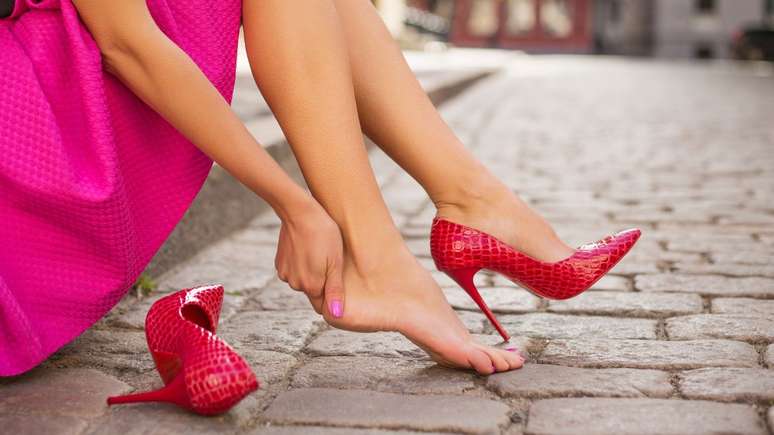If you have been experiencing pain or other symptoms in your heel, it may be worth investigating to see if bursitis in the region is the cause.
Pain, swelling and tenderness in the heel, near where you get your shoes, are symptoms ignored by many people, who think that it is only a temporary discomfort, for example due to standing for a long time. However, if they are frequent, it is important to investigate, as it may be heel bursitis.
Bursitis is an inflammation of the bursa, which is a type of sac filled with a gelatinous liquid whose function is to cushion and eliminate friction and protect the joints. These bursae are present in various parts of the body, including the heel, between the bone and the Achilles tendon.
As Mateus Martinez, director of the physiotherapy department at Pés Sem Dor, explains in the video “Heel bursitis: what it is, causes and treatments”, the bursa in this specific location also has the function of facilitating movement. For this and other reasons it is so important to be able to recognize bursitis and begin treatment as quickly as possible.
In addition to pain, swelling, and tenderness, heel bursitis can also cause difficulty walking or even standing. Additionally, it is important to note that the pain can be intense and worsen when the person exercises or puts pressure on the area. Symptoms can change in intensity from case to case.
Causes of heel bursitis
Heel bursitis can occur for several reasons. The most common are:
- Overload: Pain resulting from heel bursitis occurs, in most cases, due to overload. In other words, physical activities that generate repeated impacts on the heel, such as jumping and running. Bumps and injuries to the heel region can also irritate or inflame the bursa.
- Inadequate footwear: Tight or very stiff shoes can apply pressure or friction, contributing to heel bursitis. And, if the model does not offer adequate support to the arch of the foot, the impact on the heel increases
- Other pathologies: Bursitis can appear as a result of other conditions, such as gout, arthritis, heel spurs and Achilles tendinitis. In these cases the pain can also appear in other parts of the foot, making it difficult to identify the problem.
How to treat
The most important thing, when heel bursitis is suspected or confirmed, is to consult a professional. Only he will be able to recommend the treatment specifically suited to your case. Among the most common options, according to Mateus Martinez, are:
- Application of ice on site: This will help reduce inflammation and, in fact, pain
- Rest: Until the bursa deflates, it is essential to reduce or even stop physical activities that cause a strong impact on the area. And, even later, it may be a good idea to choose activities that do not generate new inflammation, such as low-impact activities (swimming, pilates, rowing, etc.)
- Anti-inflammatory drugs: Your doctor may prescribe these medications to reduce pain and inflammation
- Stretching and strengthening exercises: These exercises have the power to relax muscles, reducing pain
- Evaluate your shoes: try replacing shoes that pinch or rub your heel. Choose comfortable models that offer good support and, moreover, accommodate your feet adequately
- Use custom-made orthopedic insoles: they offer greater support to the heel area, bringing greater stability and reducing friction
Source: Terra
Ben Stock is a lifestyle journalist and author at Gossipify. He writes about topics such as health, wellness, travel, food and home decor. He provides practical advice and inspiration to improve well-being, keeps readers up to date with latest lifestyle news and trends, known for his engaging writing style, in-depth analysis and unique perspectives.









